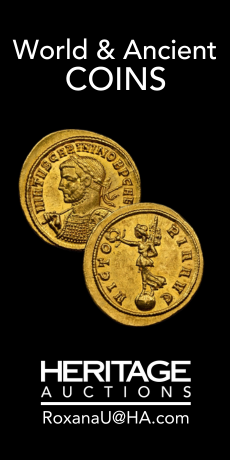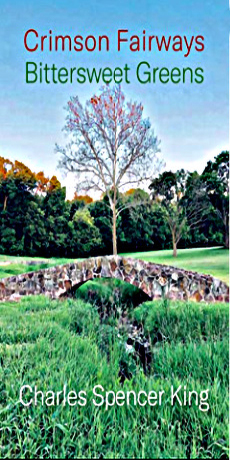By Judy Carmack Bross

Upon finishing What They Never Told Us: True Stories of Family Secrets and Hidden Identities Revealed, we told its author Gail Lukasik that this powerful non-fiction reads like a mystery. Her powerful and poignant narratives which unearth sealed records, reveal ghost fathers and give meaning to the phrase lives shattered by secrets lead to never anticipated hidden family secrets.

Author Gail Lukasik
The recently published sequel to Lukasik’s White Like Her, the book examines attitudes toward infertility, adoption, donor conception, race and racial passing, and unmarried pregnant women.
A mystery writer whose female detective lives in Door Country, a poet holding a PhD in the field, and a former PR director at Robert Morris University, Lukasik has mastered a variety of writing styles. But it was a wish to learn more about her grandfather, who her mother never spoke about, that led her into non-fiction and to write White Like Her, which the Daily Beast says she wrote “bravely and eloquently with a researcher’s eye and a daughter’s heart.”
We recently visited again with Lukasik.
CCM: Tell us about solving mysteries in this most intriguing new book.
GL: What They Never Told Us is a collection of real-life family secrets and mysteries. Each story tells how an individual discovered they were their family’s secret; how the discovery fractured their identities and sent them searching for their biological parent or parents. Their search to find their genetic family has all the twist and turns of a murder mystery. The mystery is why their parentage was kept from them.
CCM: What is the variety of families you cover in the book and what have you learned about how people cope with family challenges?
GL: The book is divided into three sections: Race and Ethnicity, Adoption, and Donor Conception. In addition to the shock of discovering that one or both of their parents weren’t their biological parents, some people found out that they were a different race or ethnicity, which added to their fractured identities.
Many of these family secrets came to light as a result of a commercial DNA test. More and more people are taking DNA tests and a surprising number are having these unexpected familial results. It’s estimated that since 2019, about 100 million people in the US have taken DNA tests. Of that 100 million about 4 in 10 or 38% have had unexpected familial results.
But not all the discoveries were due to a DNA test. Some individuals found out that they were not who they thought they were during an emotional outburst from a family member.
For example, Robin learned she was donor conceived as a teenager during an argument with her mother.
Her mother snapped at her, “I don’t know why I bothered with all that trouble to be artificially inseminated to have you.”
Robin said, “That shut me up.”
These discoveries cause devastating trauma, which sometimes tears families apart. Discovers told me that they felt betrayed by their parent or parents who kept their biological identities from them.
What often made it worse was the parent saying, it doesn’t matter and they’re the same person. The truth is it does matter and they’re not the same person.
If the majority of your life you thought your parents were your biological parents, and then you find out they’re not, you have to rethink your whole identity and your relationship to your parents.
One of the ways the people in the book coped was to find their biological parent or parents. Even in cases, where they were rejected by the biological parent or the biological parent was deceased, they found peace in knowing their true biological identity in order to redefine themselves.
CCM: Are their particular individuals that you might tell us about?
GL: Several people discovered that they were a different race and/or ethnicity, which impacted not only their identities but also their relationships with their parents.
 |
 |
Bruce-Paul Scott as a child and a young man.
One example is Bruce-Paul Scott who was raised in a large Irish Catholic family. His dark curly hair, dark brown eyes and easily tanned skin didn’t mesh with his fair-skinned, blue-eyed siblings.
Growing up he was teased by his classmates about his appearance and sometimes called the N word. When he told his dad about these incidents, his dad explained that his looks were because of a recessive gene.
It wasn’t until after his parents were deceased that he took a DNA test and discovered he was 37% African.
After a long search, with the help of the organization DNAngels, he was able to find his biological father, who was deceased. Because all the parties involved were dead, he was left with unanswerable questions that still plague him.
How did his mother, a white woman with three children at the time of his conception, become involved with a Black laborer in 1950s Texas? During that time in Texas, an interracial sexual relationship was a crime.
He did eventually find and connect with his half-sister by the same father and they now have a close relationship. But he still struggles with why his parents never told him the truth once he became an adult.
Though he accepts that he’s biracial, he feels that the psychic, psychological and identity issues will go on forever.
His way of dealing is to help others and be an example for someone else.

Kara Rubinstein Deyerin and her Black father.

Kara Rubinstein Deyerin, her mother, and her birth father Sam Rubinstein.
An opposite story to Bruce is Kara Rubinstein Deyerin. She believed that she was bi-racial. However, the outside world questioned her bi-racial identity. To prove who she was, she used to carry a photo of her Black father.
As a child she fiercely defended her bi-racial identity. She was called names and in grammar school she was slapped in the face for telling a classmate that she was bi-racial.
Again, a DNA test changed the course of her life. Wanting to go to Africa and find out where her father’s family originated from, she took a DNA test. She had no African ancestry. She was half white and half Ashkenazi Jew. When she confronted her mother, she just said DNA doesn’t lie.
Eventually Kara found her biological father who was deceased. Surprisingly he was Sam Rubinstein, a well-known and highly successful businessman and philanthropist in Seattle, known as the Salmon King.
Her father’s family rejected her, thinking she was after their money. What she was looking for wasn’t their money, but her medical history.
Kara has embraced her Jewish identity and even changed her birth name to Rubinstein. She told me that you can’t heal until you have an identity.

Brad Ewell and his adoptive parents. His first Christmas.
A story I found particularly inspiring was Brad Ewell’s. He’s a Texas policeman who discovered at 48 that he was adopted through a DNA test. He had no idea the parents who raised him weren’t his biological parents.
When he confronted his dad about why he wasn’t told, his dad said that they’d been trying to find a way to tell him.
Brad scoffed at his dad’s explanation. “They’ve been trying to tell me for 48 years. That was the new lie.”
He believes they would have taken the secret to their graves.
He felt abandoned by his adoptive parents when they wouldn’t participate in his reunion journey. But that didn’t deter him from searching for his biological parents.
Unfortunately, his biological mother was deceased, but he has two half siblings, who he’s connected with.
But the most extraordinary part of Brad’s story is the identity of his biological father. His bio-father is Jimmie Graves, who, at the time of Brad’s discovery, was serving a life sentence in Angola Prison in Louisiana for murder.
At first, Brad didn’t want to meet him. Eventually, he decided he would have regrets if he didn’t.

Brad Ewell and his birth father Jimmie Graves. Their first Christmas together.
The upshot of Brad and Graves’s burgeoning relationship was as surprising as it was ironic. Brad decided to fight for Graves’s release. Graves had been locked up for 50 years and was one of the longest-serving prisoners in Angola.
Brad admitted that he wouldn’t have done it if Graves wasn’t his biological father. But it wasn’t just that. He thought Graves had gotten an unfair deal. His original sentence was life with the possibility of parole. Without Graves knowledge, the state of Louisiana changed his sentence to life without the possibility of parole.
Although Brad acknowledges that his biological father was a man who very much needed to be jailed for what he did, he doesn’t believe he’s the same man any longer. On behalf of his biological father, Brad went before the Louisiana House and Senate committees and pleaded for his release – and succeeded.
In 2022, Jimmie Graves was given his freedom. He’s now residing in Texas, not far from where Brad and his family live.
Shortly before Brad’s adoptive father died, he told Brad that he was glad he had gotten to meet his natural father.
That acceptance was important to Brad.
Out of respect and love for his adoptive father, he refers to Graves as Pop, and his adoptive dad as dad.
CCM: Tell us about deciding to write a second book on the topic and about your own story related in your first book, called by The Washington Post as one of the most inspiring books of the year.
GL: I never had any intention of writing a follow up book, but an unexpected thing happened after the book’s publication and my appearance on The Today Show. I received an avalanche of emails from around the world from people who either wanted to share their family secrets or wanted to comment on my mother’s decision to pass as white. Often when sharing their family secrets, they said that they’d never told anyone else their secret.
I was surprised that they would confide in me, a total stranger. But something about my revealing mother’s racial secret prompted them to trust me.
As chronicled in WLH, I uncovered my mother’s racial secret in 1995 while scrolling through the 1900 Louisiana census records. I was looking for information about my mysterious grandfather, Azemar Frederic of New Orleans. To my shock, those 1900 census designated my grandfather and his entire Frederic family as Black.
I had no idea.
To verify what I found, I sent away to Louisiana for my mother’s birth certificate, which listed her race as “colored.”
When I confronted my mother about her racial secret, she swore me to secrecy until she died. I kept her secret for 17 years.
The year after her death, I appeared on PBS’s Genealogy Roadshow. The show confirmed that my mother was mixed race and had been passing.
I think the reason so many people confided their private family secrets in me was because I went public with my mother’s racial secret and they felt I would understand.
So, after receiving these emails from strangers for a number of years, I decided that these stories of family secrets and hidden identities needed to be told.
CCM: What is the effect of DNA tests?
GL: With the proliferation of commercial DNA tests, family secrets are no longer staying secret.
So, if you are a parent who’s holding a secret about your adult child’s biological identity, you may want to consider telling them the truth. In that way, you can explain your reasons for not telling them.
Additionally, if you’re considering taking a DNA test, you should be prepared for a surprise.
In WLH, I say: “We all think we know who we are. We all believe what our parents tell us about our families. Sometimes what they don’t tell us is the real story.”
Finally, if you’ve already made an unexpected familial discovery, the book is a great resource and source of comfort for you.
An early reviewer who identified herself as an adoptee said: “It provided me many resources to look into to find my biological father. It also made me feel ‘normal’ for feeling the way I do about my birth and all of the secrets.”
CCM: An area you cover is donor conception. Could you tell us about the triumphs and tragedies you have found in researching this?
GL: There’s a Chicago-based story in the book concerning a large group of donor-conceived individuals who share the same donor that I think your readers would find fascinating.
As of the writing of the book, there were 49 biological half-siblings from the same donor. That number continues to grow. What sets them apart from the sensational news stories about multiple donor-conceived half-siblings and donor fraud is what happened after these biological half-siblings discovered that they shared the same genetic father.
There were seven known offspring of the unknown sperm donor, when one of the half-siblings took on the difficult task of identifying him. (It should be noted that birth dates of the biological half-siblings range from 1954 to 1981. Although that’s an astonishingly long time, there was no fertility fraud committed. Also, all the artificial inseminations took place in Chicago.)
Once he identified the donor, he contacted one of the donor’s natural children and asked for a photo of his biological father to share with the group. After he shared the donor’s identity and photo with his half-siblings, they began to bond by exchanging photos and information about themselves.
This led to their first get-together in the Chicago area. In an extraordinary act of kindness, the donor’s ex-wife attended the meeting. She brought photo albums and gave them background information about the sperm donor, including his medical history.
After the initial get-together, they organized, selecting an “ambassador” who was in charge of contacting half-siblings who showed up as “Close Family” on Ancestry and 23ndMe.
Zoom calls were scheduled several times a year. The most surprising result of their first meeting is the donor’s natural daughter invited everyone to her Illinois home for a weekend get-together—a ritual that has continued to the present day.
One of the half-siblings I interviewed referred to her first trip to meet the other half-siblings at the daughter’s house as a “pilgrimage.”
From my four interviews with the donor-conceived half-siblings, it’s clear that being a part of this unusually supportive group has been instrumental in helping them adjust to this startling new reality.
CCM: Did telling these stories of hidden identities and family secrets change you? If so, in what way?
GL: Telling these stories of hidden identities and family secrets has affected me in ways I hadn’t expected. The reason, in part, is my approach to writing the book.
All my interviews were recorded on Zoom. Many of the interviews were around two hours with follow up questions. I tried to transcribe the interview as soon as possible, noting facial expressions, gestures, and changes in voice in order to understand what the person was feeling. So, I wasn’t just transcribing words.
Let me give you an example. I asked Bruce-Paul Scott how he felt when he learned who his biological father was. Instead of answering immediately, he got up, refilled his coffee cup, sat down, and then answered. I knew I’d hit on something difficult for him.
Repeatedly listening to the stories and noting not just what was said but how it was said, I found myself entering their stories, standing in their shoes.
CCM: What’s your next writing project?
GL: Not sure what my next writing project will be. I’m considering returning to a historical novel that’s set in 1942 Poland and 1969 Chicago. The working title is: A Matter of Memory.
What They Never Told Us: True Stories of Family Secrets and Hidden Identities Revealed: https://www.amazon.com/What-They-Never-Told-Identities/dp/1510780181






